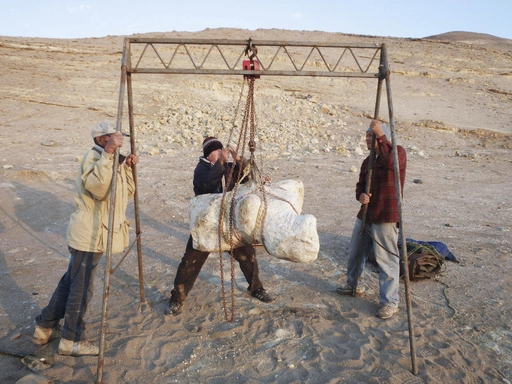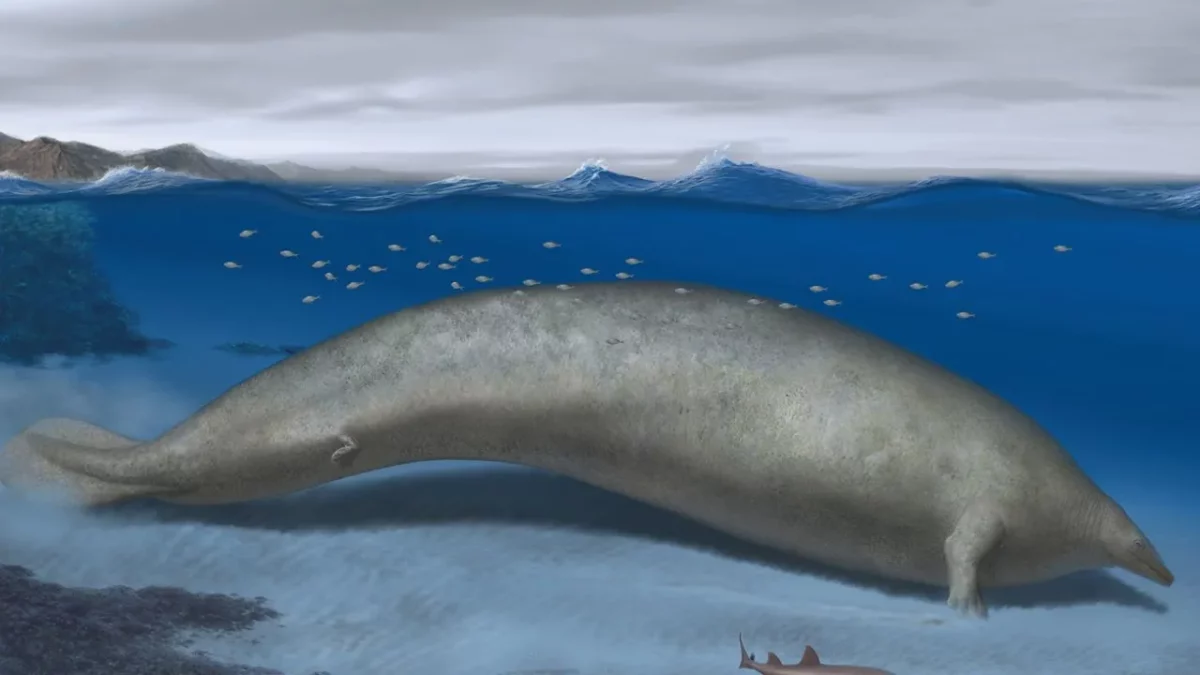Scientists have unveiled the remains of an ancient whale in Peru, which may hold the title of the heaviest animal on record. According to a study published in the journal Nature, the Perucetus colossus, is estimated to have had a body mass ranging from 85 to 340 metric tons (187,393 to 749,572 pounds).

This massive weight surpasses that of the blue whale, which has long been considered the largest animal in the world.
The partial skeleton of Perucetus, comprises of 13 vertebrae, four ribs, and one hip bone. It measures around 17 to 20 meters (55.8 to 65.6 feet) in length. However, it is shorter than a 25-meter long (82-foot-long) blue whale.
The fossil’s skeletal mass is believed to have exceeded that of any known mammal or sea vertebrate. This includes its larger relative, the blue whale. The estimated weight of Perucetus suggests that it could have been two to three times heavier than the modern blue whale. A modern Blue Whale weighs a maximum of 149.6 metric tons (330,000 pounds).
Giovanni Bianucci, explained that Perucetus likely swam slowly due to its enormous body mass. He added that it is also due to its undulatory, anguilliform swimming style, characterized by flexible curvy waves from head to tail. Giovanni Bianucci is the first author of the study, an associate professor of paleontology at the University of Pisa in Italy.
The whale’s bones displayed a unique density and compactness called pachyosteosclerosis. Which is also similar to sirenians, large aquatic herbivorous mammals like manatees and sea cows.

Perucetus’ considerable weight and size may have been evolutionary adaptations for survival in shallow and turbulent coastal waters. The dense skeleton acted as a “ballast,” providing stability in such environments.
The discovery of Perucetus is the result of extensive research by a diverse group of scientists that began in 2006 in the Ica Valley in southern Peru. This region has yielded several important fossil vertebrate findings. These include ancient whales like Peregocetus pacificus, Mystacodon selenesis, and the colossal macropredatory sperm whale Livyatan melvillei.
The immense size of Perucetus challenges our understanding of animal evolution. It indicates that nature can produce organisms with characteristics that stretch beyond imagination. The researchers’ findings suggest that cetacean gigantism or peak body mass may have been reached around 30 million years earlier than previously believed.
Also Read:
The study authors have several hypotheses about Perucetus’ diet, suggesting it could have been a plant eater or fed on small mollusks and crustaceans in sandy bottoms. Alternatively, it might have been a scavenger of vertebrate carcasses.
The discovery of Perucetus provides valuable insights into the evolutionary history of cetaceans. However, scientists continue to explore the Ica desert in search of more fossils. All this in a bid to unravel further details about these ancient giants.
Subscribe to Switch TV
Understanding Perucetus’ life history could also shed light on the origins of blubber in whales. Mainly because the fossil’s age of approximately 39 million years aligns with a time when insulation through blubber might have been advantageous.











































